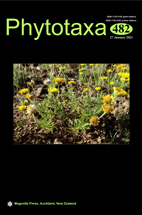Abstract
The taxonomy and nomenclature of the species of Kalanchoe (Crassulaceae subfam. Kalanchooideae) with comparatively thin, weak, scrambling stems are reviewed and discussed. This group of climbers is endemic to Madagascar, the present-day and probable historic centre of species diversity of Kalanchoe. Bar one species, K. schizophylla, the Madagascan climbing kalanchoes likely represent a monophyletic group. It is shown that this monophyletic group consists of eight taxa: K. beauverdii with three varieties (one of which is newly described), K. costantinii with two varieties (one of which is newly described), K. guignardii with two varieties (one of which is newly described), and K. scandens. Where required, the typification of some of the names previously published in the group is clarified, including through epi- and neotypification. The following new names are published here: K. sect. Invasores in K. subg. Bryophyllum, which includes the climbing kalanchoes in K. ser. Vilana, also newly described, as well as K. beauverdii var. pertinax, K. costantinii var. unguifera, and K. guignardii var. schistosepala. The similiarities between K. schizophylla and representatives of the distantly related K. ser. Vilana are restricted to their general climbing habit. They occupy unrelated positions within K. subg. Bryophyllum, occur in different types of habitat, and generally use different vegetative structures to climb into plants with which they grow socially.

